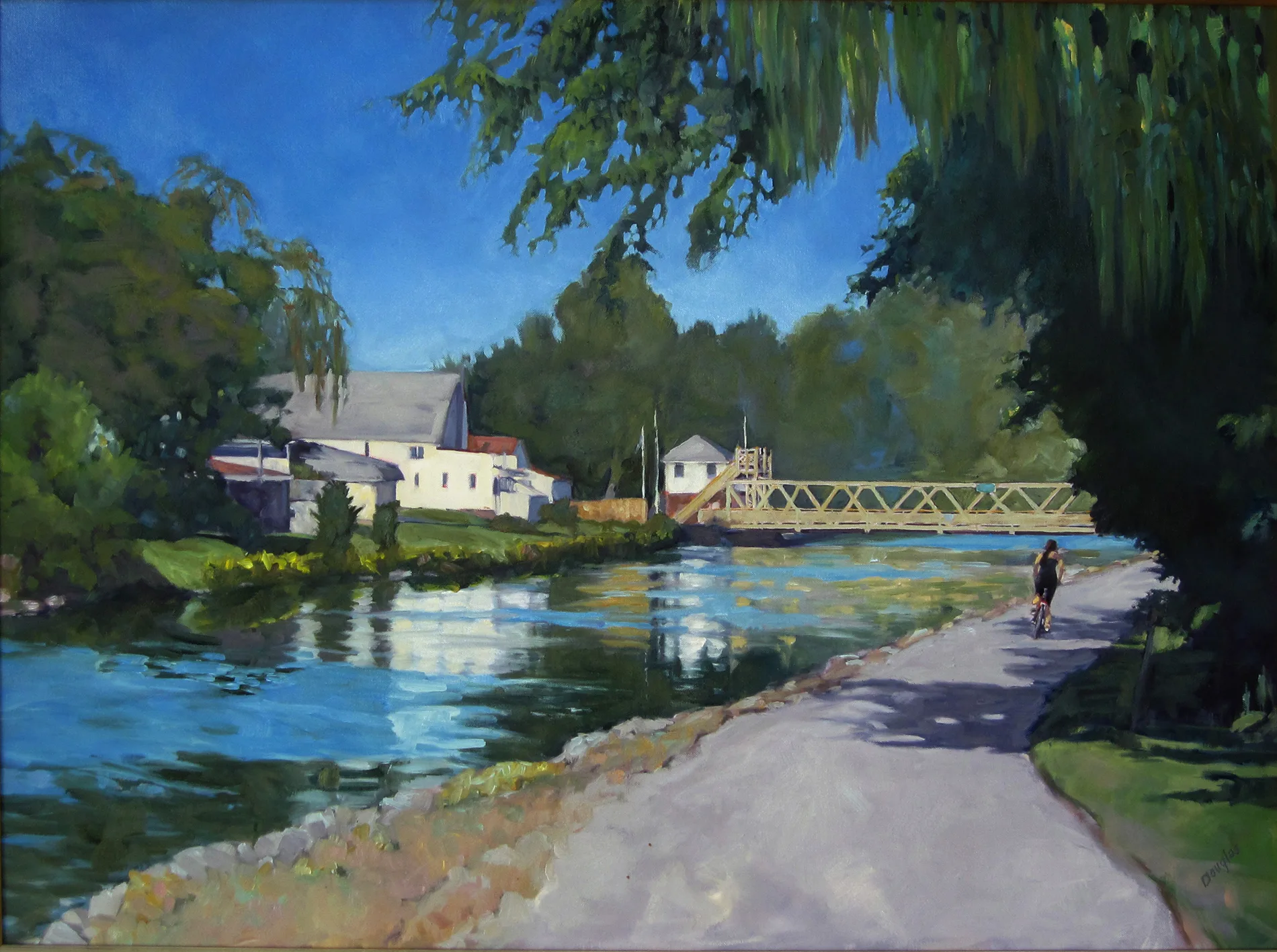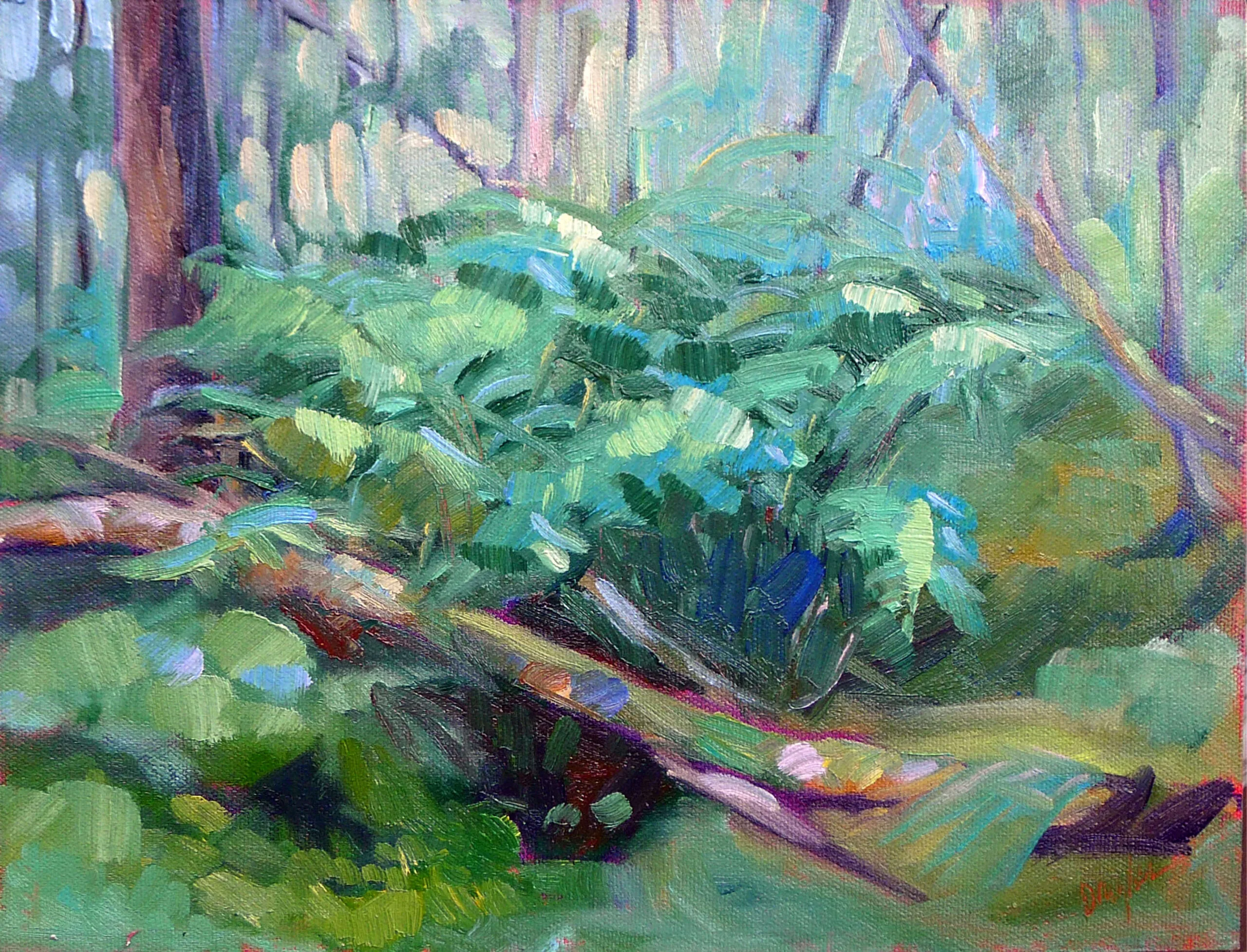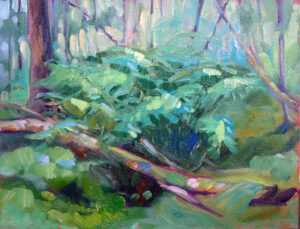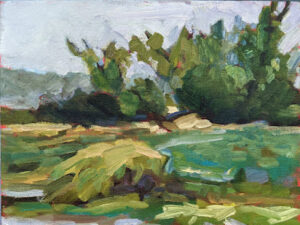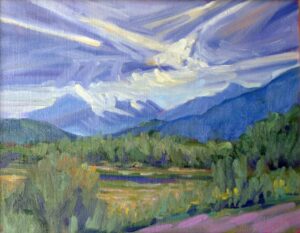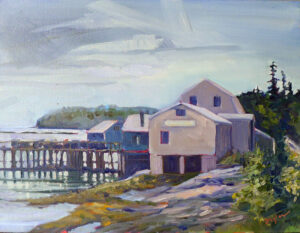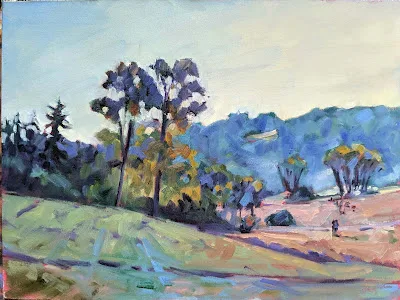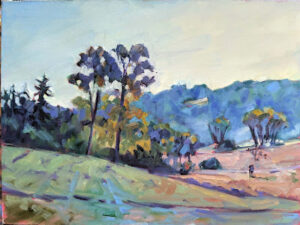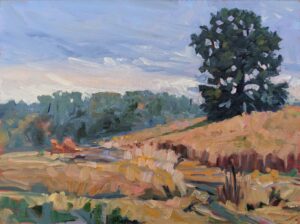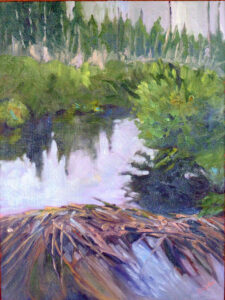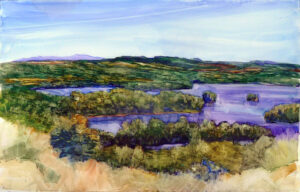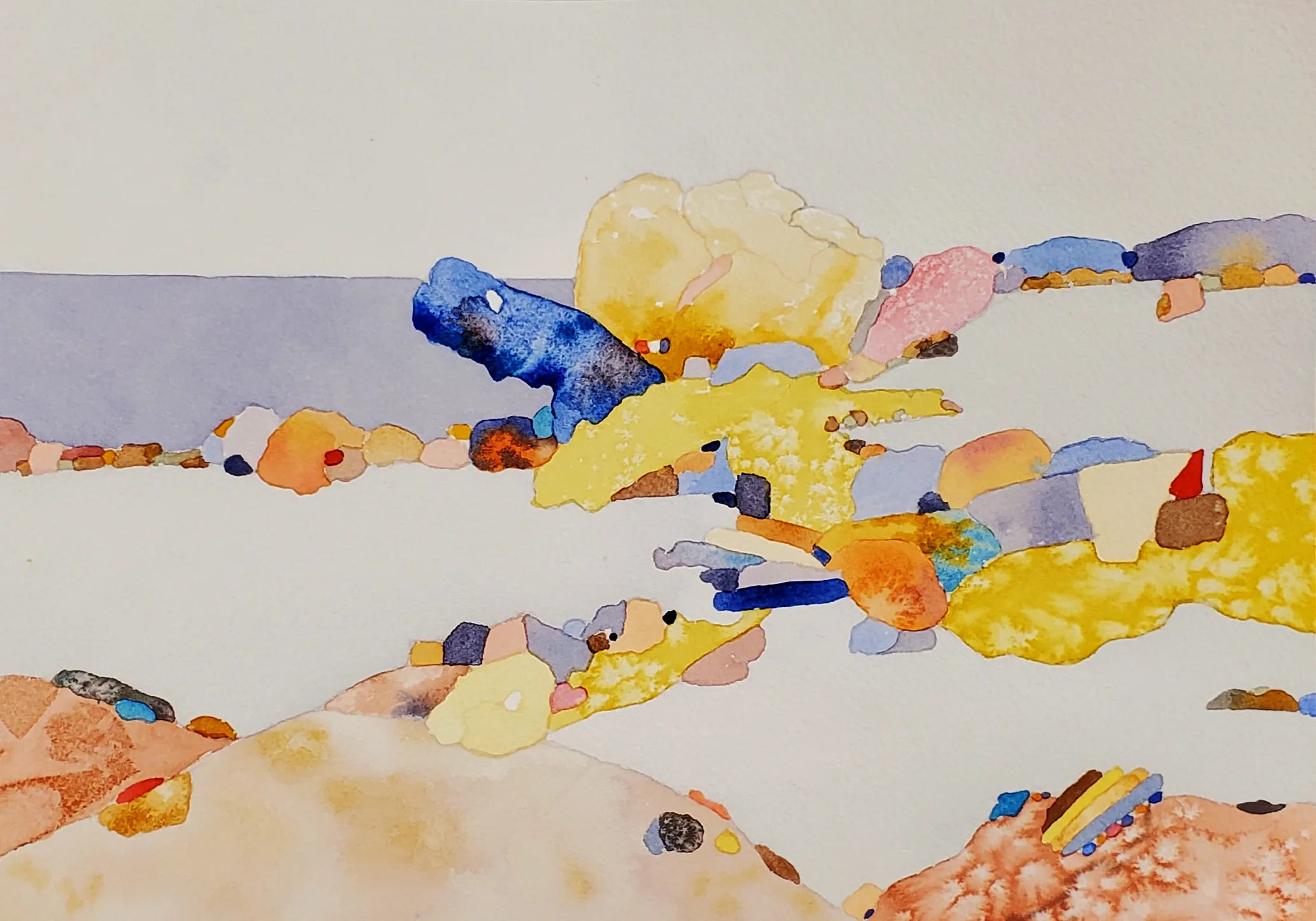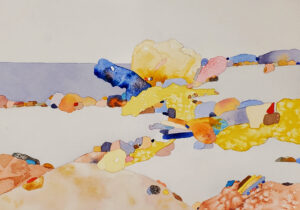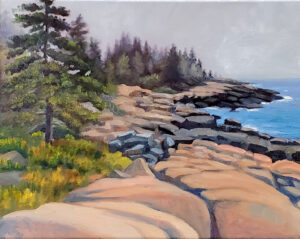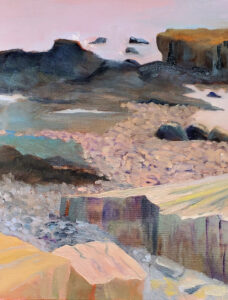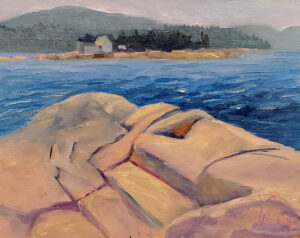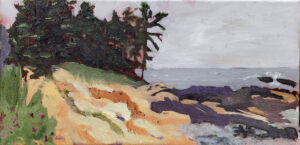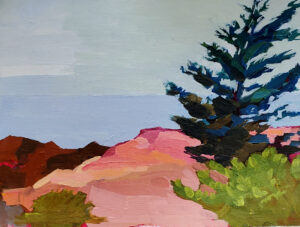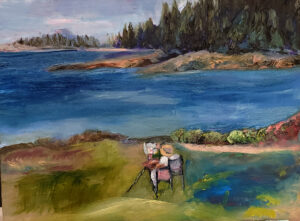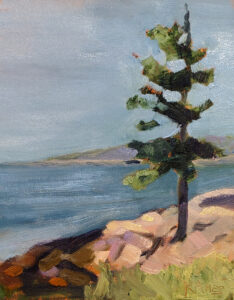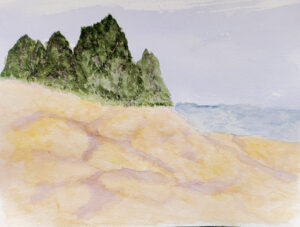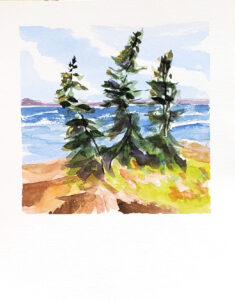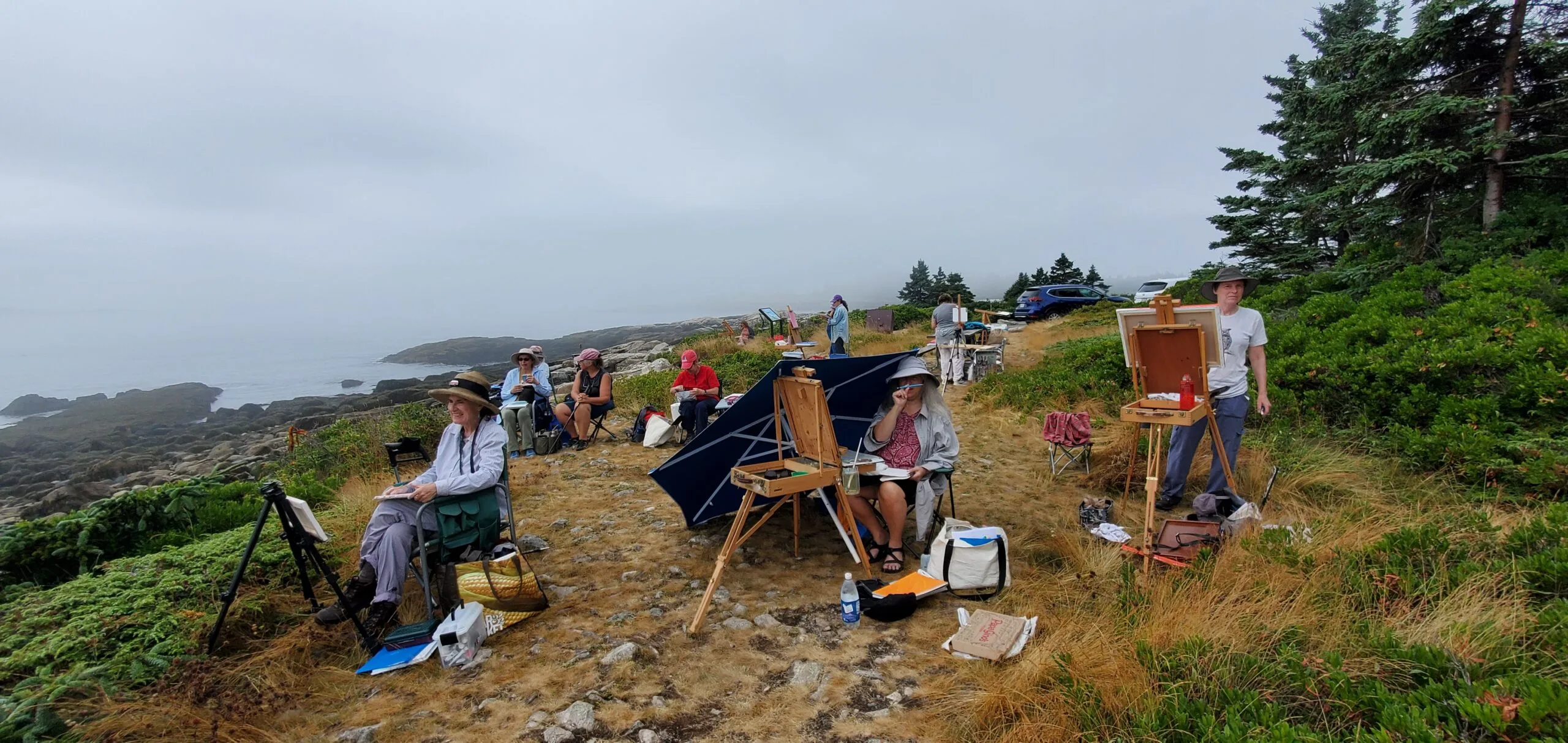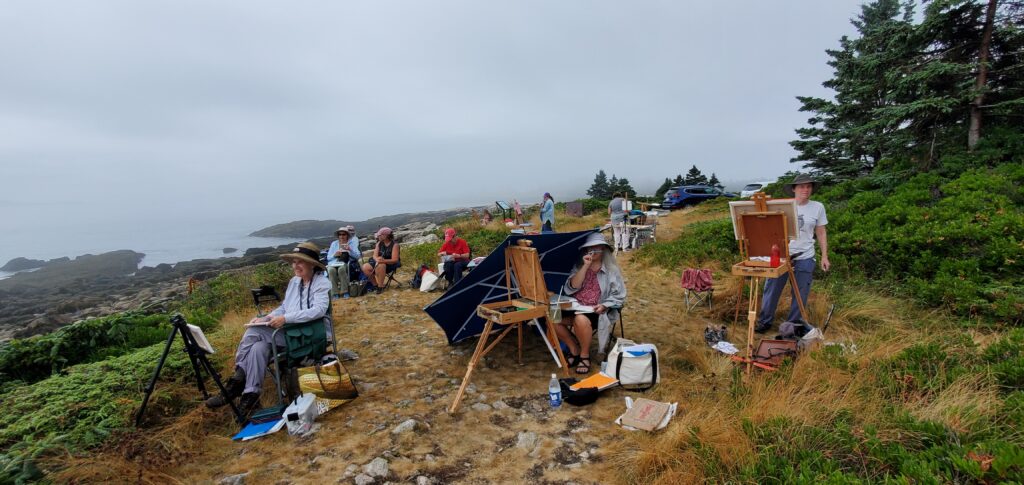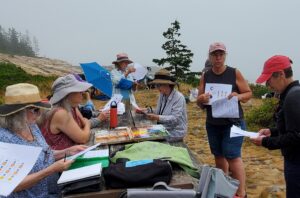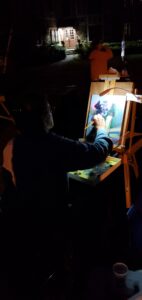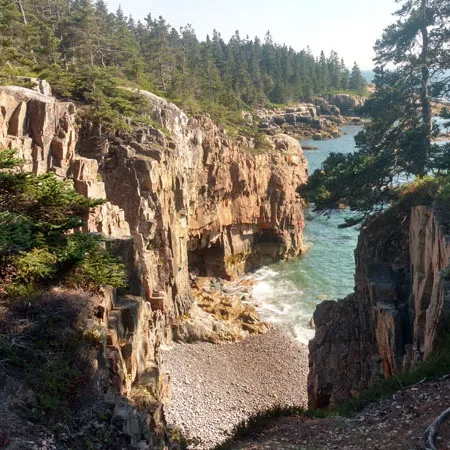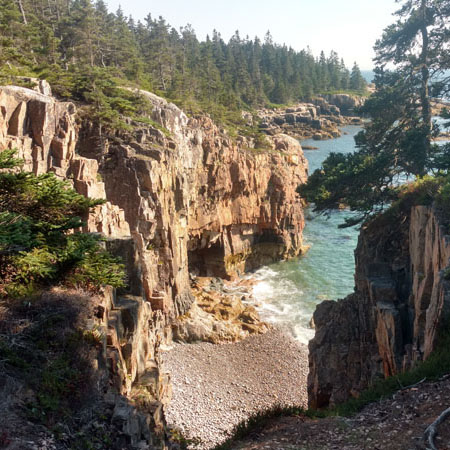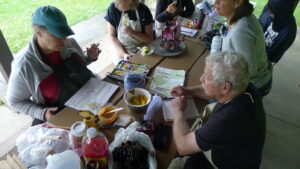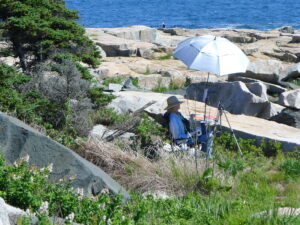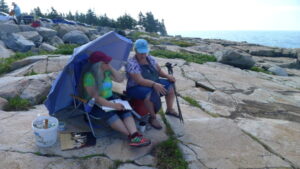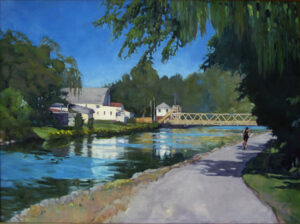
My painting student from Austin is in Maine briefly. We hiked up Beech Hill together. This is a great way to socialize—the dog gets his workout, you’re outdoors, and you’ve earned a big breakfast at the end.
“Everybody,” he told me, “is jumping on the Zoom teaching bandwagon.” That’s true, but I don’t much like the dominant formula that’s being touted. It’s too much like those social sip-and-paint places, where everyone is assigned the same painting and the instructor leads you through preformatted steps.
I’m not sure what you learn from that, except that potables and paint have a long, sometimes unhappy, relationship with each other. A painting is far more than the pigments that are swished around the canvas. It is choice, composition, focus, line, and color relationships. You don’t learn any of that by having the subject of your work preselected.
I try to tailor my classes to what my students need, instead. This fall I’m teaching three sessions.
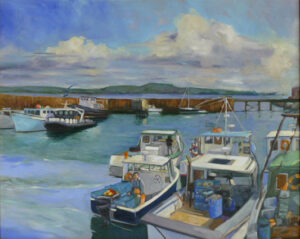
The Figure in the Landscape
Monday evenings starting September 26
The Figure in the Landscape is meant to address a problem I’ve noticed recently: many excellent painters are unsure of how to add human figures to their paintings. They either avoid them altogether or wash them in as wisps in the distance.
Adding the figure starts with some knowledge of drawing and painting the figure. Then, there’s the question of using people as part of an arresting composition, not as an afterthought.
The American Impressionist Childe Hassam used people, carriages and horses in his landscapes, and today we see a glimpse of turn-of-the-century life from his paintings. They are everyday scenes made real because there is activity in them.
This class is for intermediate and advanced alla prima painters only. To qualify, you must either have taken a class with me and gotten my OK, or you need to submit a portfolio for review. If you have questions, contact me.
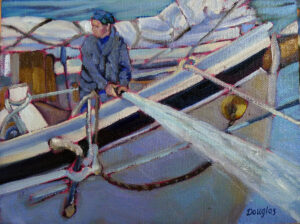
Mixing interesting color
Tuesday evenings starting September 27
For those who need instruction on the fundamentals of color and paint application, I’ll be offering Mixing interesting color. It's not enough to simply reproduce what you see; your painting's color structure must invite the viewer into your world. Alla prima painting rests on the idea of getting it right on the first strike, so we’ll delve into color theory as well as the practical business of making and applying color with confidence.
This class is for early-intermediate painters who have been introduced to the process of painting but haven’t completely mastered the design/application protocol. If you have questions, contact me.
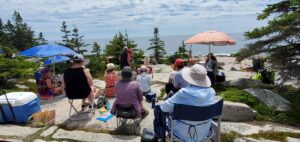
Live in midcoast Maine: Plein air short session
Tuesday mornings starting September 27
If you can drive to Rockport, you can take this class. It meets in various beauty spots in the region on Tuesdays from 10 AM to 1 PM. This is the only class where I can handle beginning painters, so if you’re wanting to try painting, it’s a good place to start. (The schooner American Eagle is another, and I understand there’s still a berth open for my September workshop. That comes complete with a good-quality watercolor kit.)
There is simply no better way to learn painting than en plein air (with still life a close second, and figure after that). Maine in Autumn is beautiful, so if you’re still here, plan to join us.
For the details on these classes, see here.

